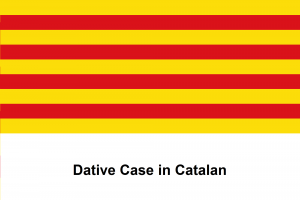Language/Catalan/Grammar/Dative-Case-in-Catalan
In Catalan, the dative case is used to indicate the indirect object of a sentence. The indirect object is the recipient of the action expressed by the verb, and it is often introduced by a preposition like "a" or "per." In this lesson, we will learn about the dative case in Catalan and how to use it correctly.
Formation of the Dative Case
The dative case is formed by adding the preposition "a" before the noun or pronoun that represents the indirect object. For example, "donar" means "to give" in Catalan, and to say "I give a present to my friend" in the dative case, we would say:
"Jo dono un regal a la meva amiga." ("I give a present to my friend.")
In this sentence, "a la meva amiga" represents the indirect object in the dative case. The preposition "a" is used before the noun "amiga" to indicate that she is the recipient of the action expressed by the verb "donar."
Usage of the Dative Case
The dative case is used in several contexts in Catalan, including
Indirect Object of a Verb
The dative case is used to indicate the indirect object of a verb, as we saw in the example above.
Personal Pronouns
Personal pronouns in Catalan also have a dative case. Here are the dative forms of the personal pronouns:
- Em (me)
- Et (you, informal)
- Li (him, her, it, formal)
- En (us)
- Us (you, formal)
- Els, elles (them)
For example:
"Li vaig donar un regal." ("I gave him/her a present.")
In this sentence, "li" is the dative form of the pronoun "ell/ella/ell/això" (he/she/it).
Certain Verbs and Expressions
Some verbs and expressions in Catalan require the use of the dative case. For example:
- Agrair (to thank): Agraeixo a la meva família el seu suport. (I thank my family for their support.)
- Dir (to tell): Li vaig dir a l'Anna que vingués. (I told Anna to come.)
- Interessar (to interest): M'interessa la història de Catalunya. (I am interested in the history of Catalonia.)
Conclusion
The dative case is an important part of Catalan grammar, and it is used to indicate the indirect object of a sentence. By learning how to use the dative case correctly, you can improve your Catalan language skills and communicate more effectively with native speakers.

